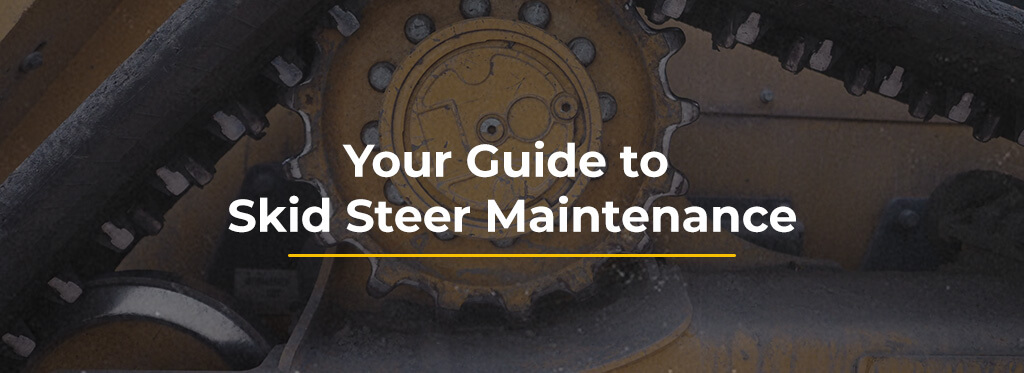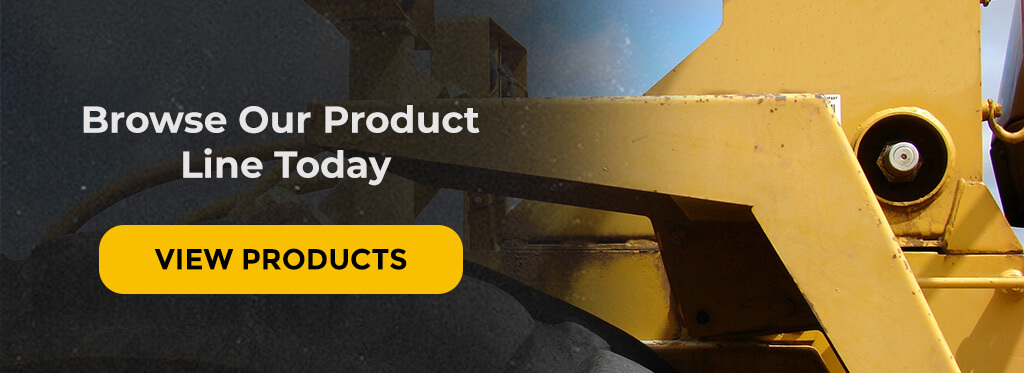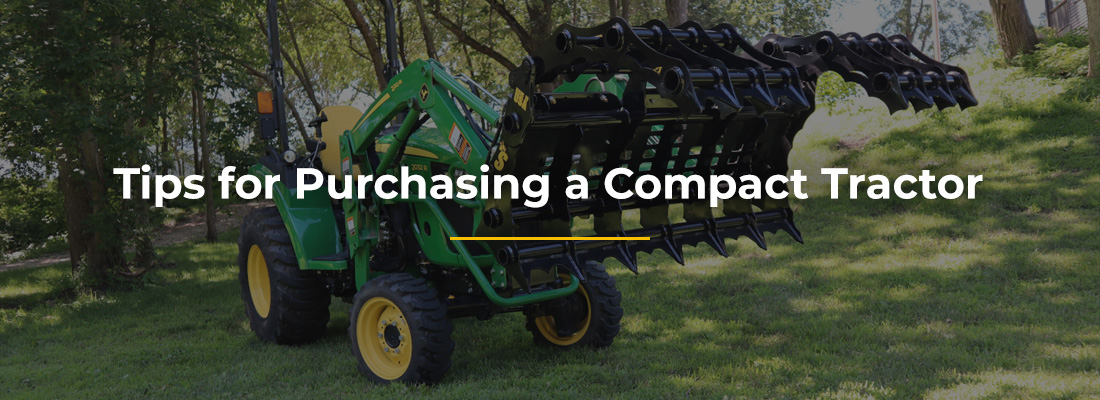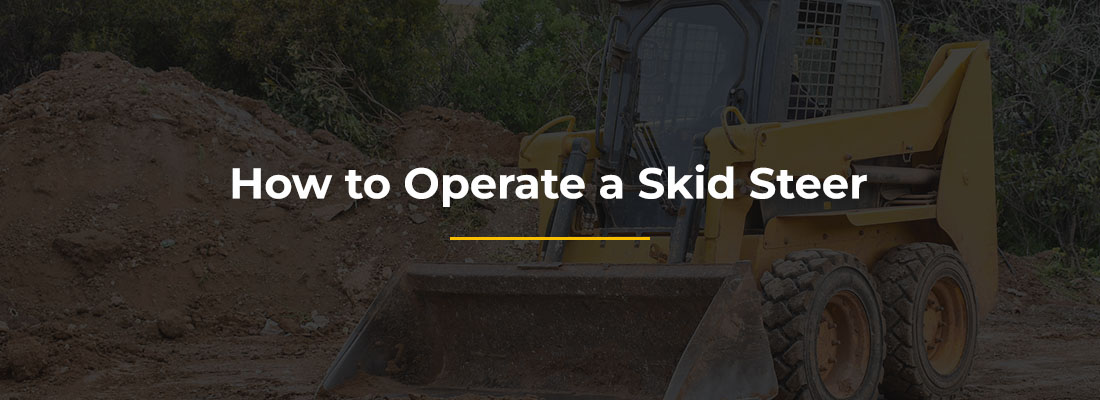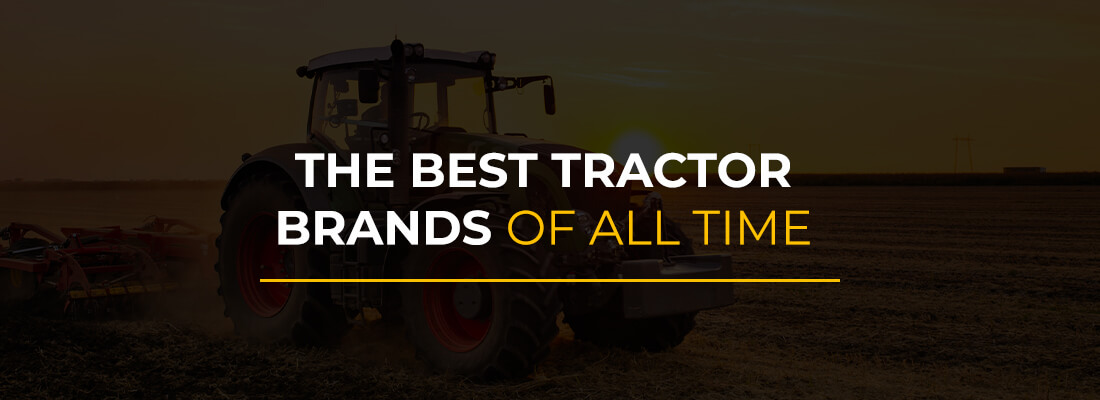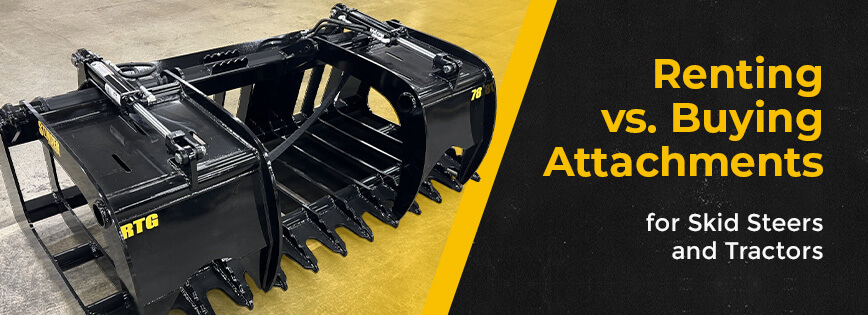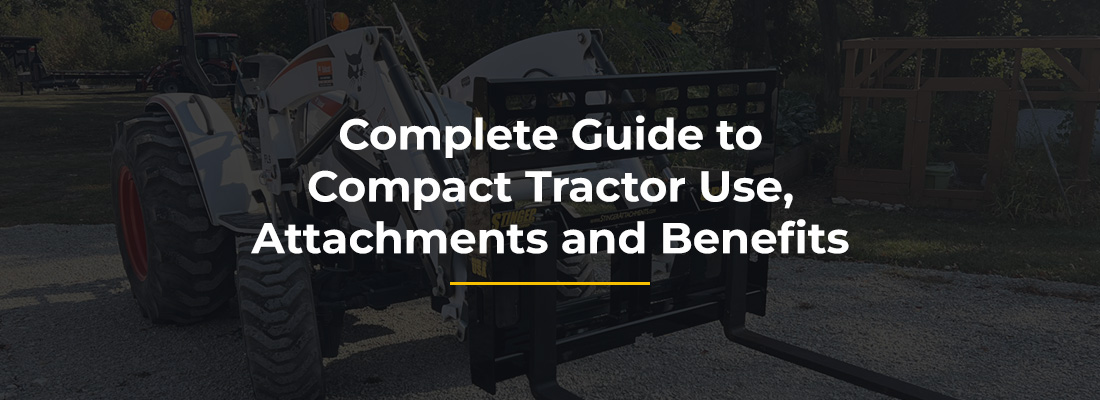Whether you need to move hay bales, dig up tree stumps or plow snow, a skid steer can get the job done. These machines are compact and powerful, and use multiple attachments you can switch out depending on your project. Once you invest in a skid steer, you’ll never go back.
Because these machines are so useful, they get a lot of wear and tear. Without proper maintenance, it’s only a matter of time before something breaks, and your equipment is out of commission until you’ve contacted a skid steer service. Depending on what you do, it can be an expensive wait — and you may have to rent equipment until your skid steer is fixed.
With the right maintenance plan, your skid steer will last longer, work better and resell at a higher value. However, the longer you wait to start a maintenance routine, the more your machine and business will suffer. Learn what you can do to promote the longevity and value of your skid steer.
Parts of a Skid Steer
Skid steers are made of several basic parts. There’s the cab, where the driver sits — these can come surrounded by glass, which you can take off to clean. The controls are inside the cab. Newer skid steers have several small screens inside where you can scroll to see the settings. These screens will also update you with alarm codes, similar to the warning lights in your car.
The cab sits on top of the wheels or tracks, depending on which model you get. While wheels work best for traveling across hard surfaces like asphalt, tracks are better for driving on snow or uneven surfaces. Tracks also tend to compact the ground less. Whichever type you choose, both require regular maintenance.
On the front of your skid steer is an attachment, such as a bucket, grapple or snowplow. Here’s a quick list of common attachments:
- Augers
- Backhoes
- Blades
- Buckets
- Grapples
- Pallet forks
- Plows
- Rakes
- Rotary cutters
- Tillers
While some skid steers come with multiple attachments, a base machine typically comes with a bucket. You can buy new attachments as you learn what you need. The best attachments for you depend on what you plan to do with your skid steer.
Inside your skid steer are multiple components that keep the equipment running. These include an oil tank, an engine, a hydraulic fluid tank and several filters. While you may be able to service some of these parts yourself, it’s always a good idea to take your skid steer to experts for more serious maintenance.
Common Skid Steer Repairs
Without regular maintenance, your skid steer won’t work as well for as long. What tends to go wrong with skid steers? Specific parts might break, and if things get bad enough, your equipment might stop working altogether.
Here are a few things that commonly go wrong with skid steers:
- Dirty filters clog components and reduce efficiency.
- Bearings and gears can wear out.
- Low fluid levels can harm the engine.
- Lack of grease can cause stiffness.
- Clogged fuel lines can keep it from starting.
- Tracks can become misaligned.

Like with your other tools, the best way to avoid trouble with your skid steer is to take care of it regularly. The longer you use this equipment, the easier it will be to tell if something is off — you’ll get a sense of the normal noises it makes and how it should move.
Ideally, maintenance will help you prevent a major problem long before it happens. While it may be easy to tell if something obvious breaks, small maintenance tasks can fall under the radar. Over time, these tasks can add up and affect your skid steer’s performance.
Skid Steer Maintenance Checklist
The best way to catch issues early is to follow a regular maintenance schedule. Most people who use a skid steer have a daily checklist to ensure the equipment is ready for use and cleaned up before it’s put away for next time.
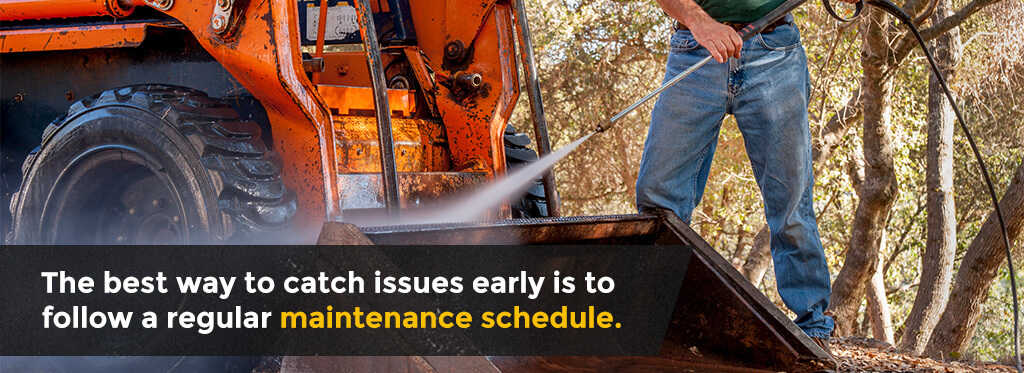
To gauge when to service your equipment, track the hours you use your skid steer. Your machine should do this for you automatically, and you can find the number inside on a screen or the dashboard in older models. Every model is different, so check your manual to determine how long your skid steer can go between maintenance.
Daily Maintenance Schedule for Skid Steers
Here are some things you should be looking for when you conduct a daily maintenance check on your skid steer:
- Check the manual for model-specific maintenance steps.
- Do a visual inspection — does everything look right from the outside?
- Check for any loose pins or bolts and any signs of leaking fluids.
- Look over fluid levels for oil, fuel and hydraulic fluid.
A few times a week, use a grease gun to lubricate all the grease fittings. You can usually find these at all the pivot points on the machine, or check your manual to see where they are. The more you use your skid steer, the more often you’ll want to grease it. Grease is inexpensive and can do a lot to keep your machine running.
After you use your skid steer, do another quick check. If you’re running low on fuel or oil, you can make a note to refill those next time or fill everything before you put it away. It’s also a good idea to do a quick walk-around and ensure everything looks normal. After especially dirty jobs, you may want to spray the skid steer off right away.
Some people will use an air hose to clean dust and debris out of the inside of their skid steer. You can also use warm water from a hose, although be careful with electric equipment — not everything can be sprayed without damage. Check the equipment manual for more details. You should avoid pressure washing inside the machine, as some parts are delicate.
How Often Should Your Skid Steer Be Serviced?
In addition to a daily maintenance check before and after each use, you need to complete several maintenance tasks after reaching a certain number of use hours. Again, check your user’s manual for details.
Since every machine is different, your manual will have a specific schedule you can follow. Here are several routine maintenance tasks that need to be completed every few weeks or months:
- Wash the outside
- Clean air filters in the cabin
- Remove and clean the glass
- Clean the screen and radiator
- Drain and fill the engine with fresh oil
- Check tire pressure or track alignment
- Change the filters for fuel, oil, air and hydraulic fluid
A good rule of thumb is to get your skid steer professionally serviced every 250 to 500 hours. If you can complete some of these tasks yourself, you may be able to wait longer. However, taking your equipment to professional mechanics is important — they can check to ensure everything is working safely and efficiently, including the battery, axles and steering.
Every time you change a filter, replace the oil or take your equipment to be serviced, write it down so you have a record. That way, you’ll never have to wonder how long it’s been since you completed a maintenance task. This record can also help you resell your equipment at a higher value since it will be clear you took good care of it.
While it may seem expensive to constantly care for your skid steer, regular maintenance has many benefits! Here are some of the advantages:
- Higher resale value
- Equipment longevity
- Uninterrupted workdays
- Timely project completion
- Better equipment performance
Don’t skimp on maintenance — follow the schedule in your user’s manual and take your equipment to a professional regularly. The more on top of upkeep you are, the more work you’ll get done and the better your skid steer will treat you.
What Tools Do You Need for Skid Steer Maintenance?
You’ll need a few basic tools to complete maintenance tasks for your skid steer. You may already have most of these tools around. Here’s a quick list so you can be prepared when it’s time to take care of your skid steer:
- Air hose
- Water hose
- Paper towels
- Impact driver
- Rubber gloves
- Oil filter wrench
- Adjustable wrench
- Bucket to catch draining oil
- Pressure washer, for the outside only
- Notebook and pen for noting the date and task
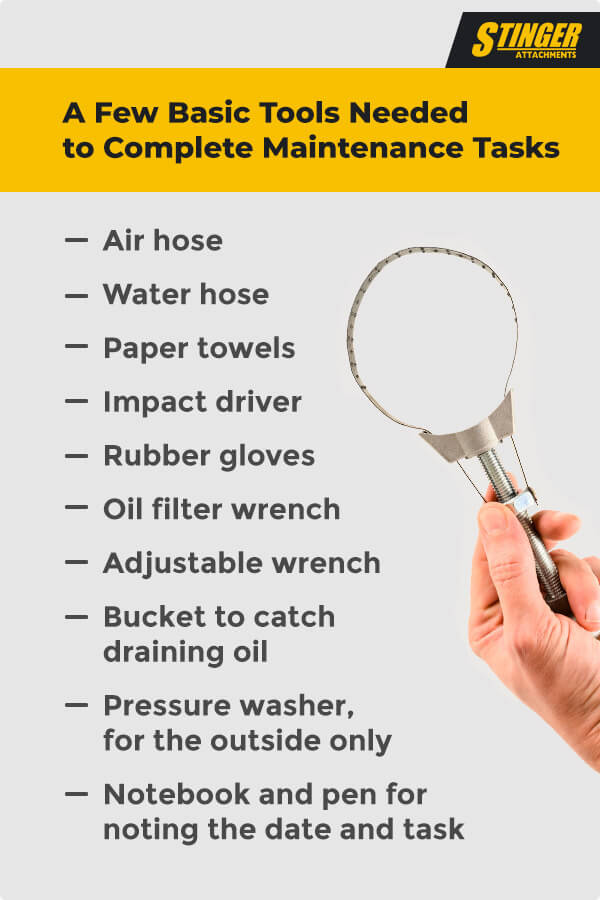
The exact tools you’ll need will vary depending on your skid steer model. Your manual should let you know if you need a specific tool to complete maintenance tasks. However, this list is a good place to start.
Storage and Seasonal Tips for Skid Steer Maintenance
Before heated garages, most people stored their skid steers in a cold environment. If you do this, you’ll need to pay special attention to how the grease, fuel and fluids handle the cold. Warming up your machine before each check will become an important part of your routine.
In a heated environment, the grease you’ve added will stay soft and pliable. It will keep your machine running smoothly and be easier to warm up and use each day. From summer to winter, you may notice a distinct difference in how your skid steer responds and runs.
You need to do some additional maintenance if you want to use your skid steer in the winter. When snowplowing or driving in snowy conditions, you can expose your equipment to salt, which can corrode protective coatings and cause rust. Washing the underside of your skid steer after every use will help to reduce any damage from salt.
How to Handle Rust on Your Skid Steer
If you notice rust forming on your equipment, you can do a few things to remove it and prevent it from spreading. Rust will reduce the value of your skid steer and eventually destroy it, so respond quickly if you notice a rust problem.
Here are a few options for dealing with rust on your skid steer:
- Add a protective coating
- Sandblast existing rust off
- Store your equipment inside
- Clean off salt after every use
- Reduce moisture in the space with a dehumidifier
Rust effectively eats metal, weakening your equipment. To get the most out of your skid steer, take precautions against rust and deal with it quickly if you notice it. You can avoid most rust issues by following the prevention strategies listed here!
When to Replace Your Skid Steer
The best time to replace your skid steer depends on several factors. If you don’t need it anymore, it’s best to sell it before it sits unused and without maintenance for too long. If you rely heavily on your skid steer, try to replace it before it breaks down or needs serious repairs.
Skid steers last for a certain number of work hours, which varies by brand. Equipment from well-known, reliable brands lasts several thousand hours. Like any other tool, regular maintenance can significantly expand the life span of a skid steer.
Many people resell or replace parts long before reaching this hourly limit. Because skid steers can be an expensive and necessary investment, this strategy can help you get the most out of your equipment. Here are a few parts that commonly need to be replaced:
- Engine
- Cab door
- Tracks and wheels
If you buy a used skid steer, be sure to give it a careful inspection. Don’t hesitate to ask questions about its maintenance, hourly use and history of repairs. The goal is to find a piece of equipment that works for you rather than buying one you have to work to keep running.
While there’s no perfect answer for the best time to replace your skid steer, there are some clear signs that your equipment is coming to the end of its lifetime. For instance, it may start needing continual repairs. If you’re constantly replacing parts or sending your machine to be serviced, that’s a good sign that it’s time to invest in new equipment if possible.
Choose Stinger Attachments for Your Skid Steer
Stinger Attachments designs and manufactures metal skid steer attachments out of southern Minnesota. Our company was born out of a love of metalworking, and we regularly use our own designs. To help you get work done, we use the highest quality materials and have a strict manufacturing process.
Some of our best-selling products for skid steers include augers, grapple buckets, pallet forks, tree pullers and material buckets. We also offer attachments for compact tractors and utility tractors — and yes, our attachments are compatible with a wide range of manufacturers, including John Deere, Kubota and Bobcat!
If you live in our area, you can come pick up attachments in person. Otherwise, we can ship your order to you. We want to help you avoid the frustration of broken equipment, and customer satisfaction has always been our priority. Browse our product line today, and reach out if you have any questions!

